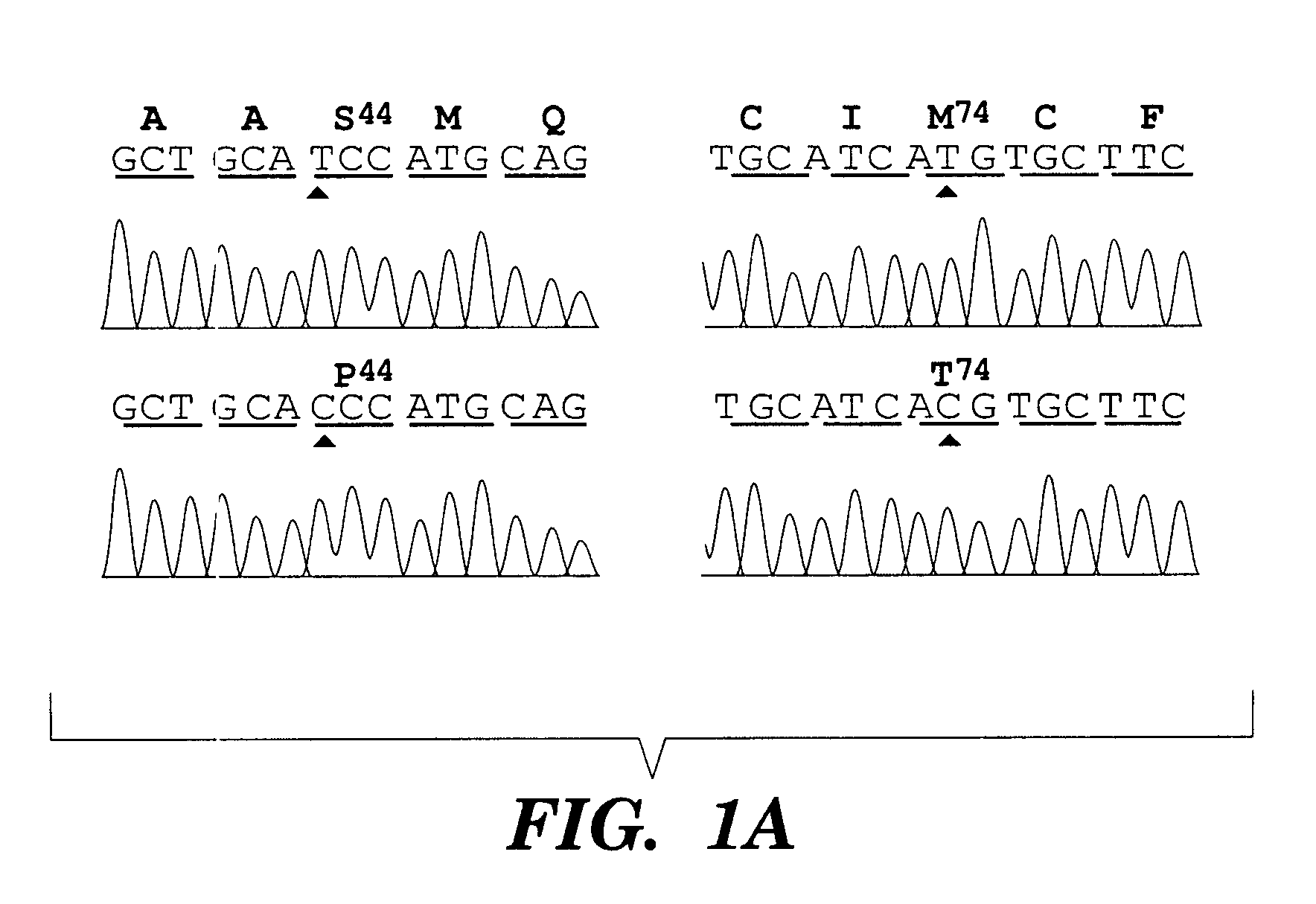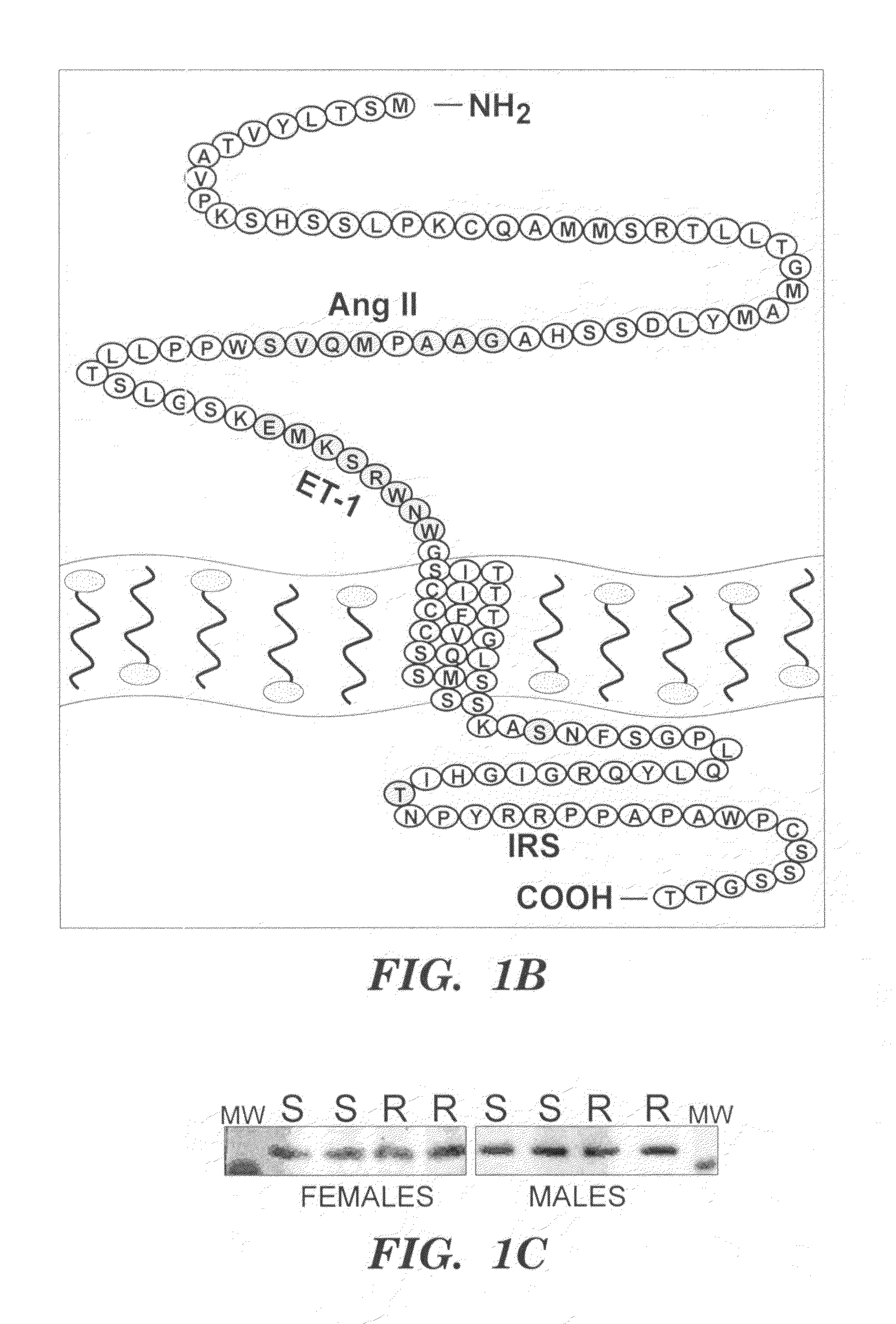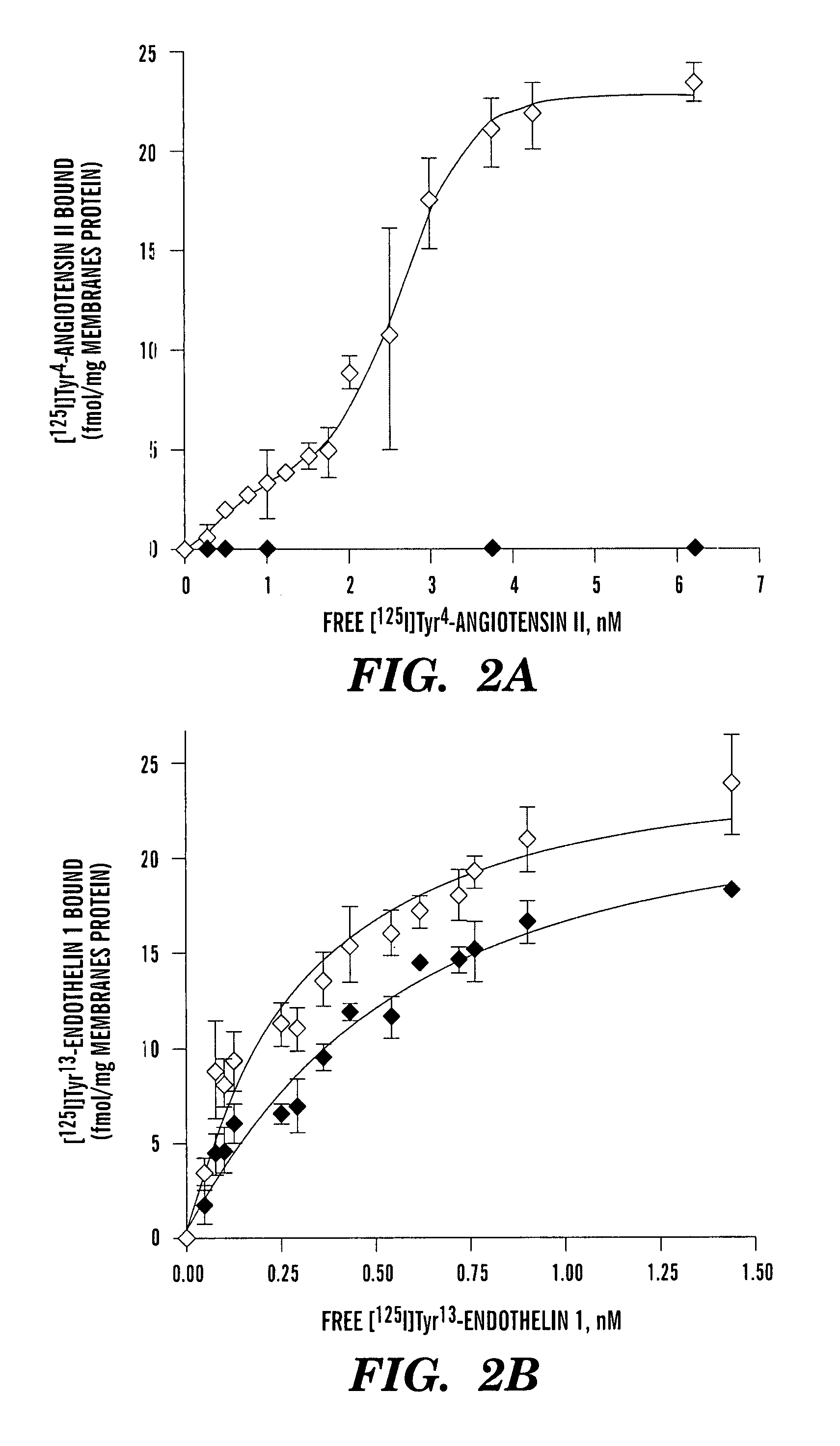Roles for dual endothelin-1/angiotensin II receptor (Dear) in hypertension and angiogenesis
an angiogenesis and endothelin technology, applied in the direction of fused cells, antibody medical ingredients, metabolic disorders, etc., can solve the problems of individual susceptibility to certain diseases or disorders, heart attack, kidney damage, congestive heart failure, etc., to improve the expression and/or affinity, accurately predict the susceptibility to hypertension, and improve the effect of susceptibility
- Summary
- Abstract
- Description
- Claims
- Application Information
AI Technical Summary
Benefits of technology
Problems solved by technology
Method used
Image
Examples
example 1
[0126]The inbred Dahl / JR rat model is an established model of human essential hypertension comprised of a salt-sensitive, hypertensive strain (Dahl S) with its cognate salt-resistant, normotensive control strain (Dahl R) (52). To investigate the involvement of Dear in hypertension pathogenesis we obtained cDNAs spanning the entire amino acid coding region for both Dahl S and Dahl R receptors. Two nucleotide differences were detected resulting in two non-conservative amino acid substitutions: T2814 (Dahl S) / C2814 (Dahl R) nucleotide transition resulting in S44P substitution and T2901 (Dahl S) / C2901 (Dahl R) nucleotide transition resulting in M74T substitution (FIG. 1A, 1B). The S44P substitution is located in the putative AngII binding site in the extracellular domain; while the M74T substitution is located in the putative transmembrane domain (FIG. 1B). The Dahl S cDNA nucleotide sequence is identical to the previously reported Sprague Dawley rat brain Dear cDNA (1). We note that bo...
example 2
[0142]We isolated the mouse Dear gene from a 129 SVJ mouse genomic library. Molecular characterization detects a one-exon transcription unit (FIG. 5A). The mouse receptor polypeptide contains 127 amino acids showing 78 percent homology with the rat receptor and binds solely ET-1 (data not shown) resembling the recently characterized Dahl R Dear S44P / M74T rat variant (2), and suggesting that observations in Dear− / − mice are most likely not AngII-mediated. The mouse Dear mRNA is detected in all tissues tested with the highest level of expression in kidney and aorta (FIG. 5B).
[0143]Targeted inactivation of Dear− / − in ES cells was done by replacement of the genomic region spanning amino acids 81-127 of Dear with a PGK-neomycin cassette (FIG. 5A) resulting in the deletion of the last 47 amino acids of the Dear polypeptide, including the putative G-protein interacting domain (1). Screening for homologous recombination was done on 196 G418-resistant colonies by Southern blot analysis (FIG....
example 3
Blood Pressure Measurements
[0168]Male and female cohorts of Dear KO and wild type (N10 backcross generation) were used to measured BP. Twelve (+ / −) and 11 (+ / +) female mice and 14 (+ / −) and 14 (+ / +) male mice were studied. Testing was done at 6 months of age.
[0169]Mice were maintained on regular rodent chow and on a 12-hour light / dark cycle. Mice were transported and allowed to settle in the procedure room 1 hour before measurements were taken. Systolic BP along with heart rate was measured by a programmable tail-cuff sphygmomanometer (Visitech BP 2000, Visitech, NC). Mice were lightly anesthetized with intraperitoneal ketamine (80 mg / kg) and xylazine (18 mg / kg) and placed on the heated platform after a 2 minute interval. Three sets of 10 consecutive readings each were taken per mouse. Data is presented as average of at least 20 readings per mouse spanning the heart rate range of 300-500 bpm.
[0170]Results
[0171]As shown in FIG. 10A, SBP did not differ between WT and KO male mice (WT,...
PUM
| Property | Measurement | Unit |
|---|---|---|
| molecular weight | aaaaa | aaaaa |
| half life | aaaaa | aaaaa |
| diameters | aaaaa | aaaaa |
Abstract
Description
Claims
Application Information
 Login to View More
Login to View More - R&D
- Intellectual Property
- Life Sciences
- Materials
- Tech Scout
- Unparalleled Data Quality
- Higher Quality Content
- 60% Fewer Hallucinations
Browse by: Latest US Patents, China's latest patents, Technical Efficacy Thesaurus, Application Domain, Technology Topic, Popular Technical Reports.
© 2025 PatSnap. All rights reserved.Legal|Privacy policy|Modern Slavery Act Transparency Statement|Sitemap|About US| Contact US: help@patsnap.com



